Atopic dermatitis
Atopic dermatitis is a skin condition with a highly variable course. The disease is characterized by dry skin, rash, and intense itching. Symptoms often begin in childhood, but can also occur later in life.
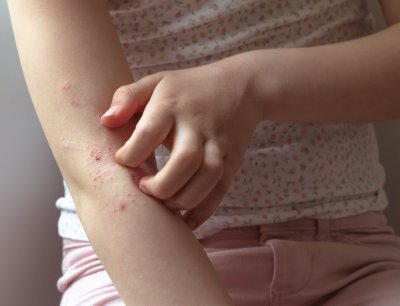
Image: iStock
About Atopic Dermatitis
ATOPIC DERMATITIS is a chronic and recurring skin condition characterized by itching, dry skin, and rashes in age-specific areas of the body. Although the disease is chronic, fortunately, there are several types of medical treatment that can help.
The SEVERITY varies from person to person. Most people with atopic dermatitis have only small areas of mild rash and mild itching. In severe atopic dermatitis, there are larger areas of aggressive rash and intense itching.
The DIAGNOSIS is made by a doctor, usually a general practitioner, pediatrician, or dermatologist, who will examine your skin and ask questions about your medical history. If the doctor is unsure about the diagnosis, further tests may be needed, and in a few cases, a small skin biopsy may be necessary.
Atopic dermatitis is not contagious.
Causes
The etiology of atopic dermatitis is intricate and still not fully elucidated; however, it is known that a combination of environmental factors and genetic predisposition contributes to its development. The mechanisms behind atopic dermatitis can be difficult to understand.
In atopic dermatitis, the skin barriers are weakened, making the skin less protected against the environment. Atopic skin is more easily affected by the environment and loses more moisture than healthy skin, making it drier. In addition to a weakened skin barrier, there is a change in the skin's immune defense, resulting in red, itchy rashes; eczema.
Eczema and dry skin are highly itchy, leading many individuals to scratch the affected areas, thereby exacerbating the weakening of the skin barrier. The sensation of itch prompts individuals to scratch, initiating a cycle known as the "itch-scratch cycle." This perpetuates eczema, potentially leading to a chronic condition, increasing the risk of localized skin infections.
Symptoms and Localization
Atopic dermatitis is characterized by dry skin, rash, and intense itching. The rash is thickened, reddened, and flaky. Sometimes, fluid-filled blisters/small bumps occur. The rash may persist continuously or fluctuate in its presence. While some people experience minor itching in small localized areas, others may contend with extensive itching and pronounced rashes covering larger areas of the body.
APPEARANCE. The dry areas and eczema have a different color than the surrounding skin and may look different on different skin types. On light skin, the area with eczema may appear red or pink. On darker skin, the redness may not be as visible, but the area often appears darker than the surrounding skin, and the areas often have a purple or grayish hue.
LOCALIZATION. It is typical for atopic dermatitis that the rash is most pronounced in different parts of the body in different age groups:
In infants (0-2 years), it is typical to have eczema on the face and the stretch side of the arms and legs. In childhood (2-12 years), eczema is often present on the inside of the elbows and knees, and in adolescence and adulthood, eczema is most pronounced on the face, neck, and hands.
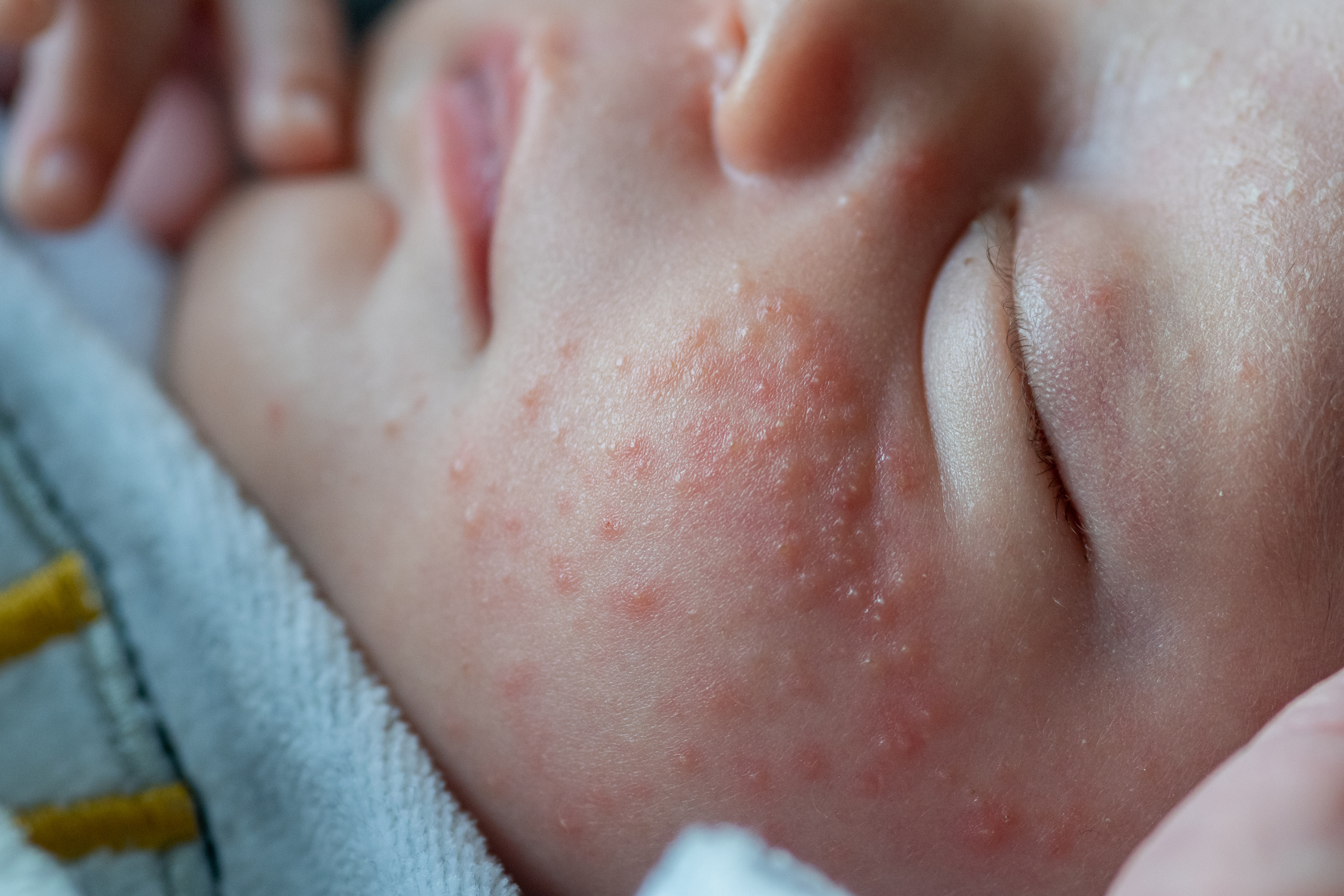
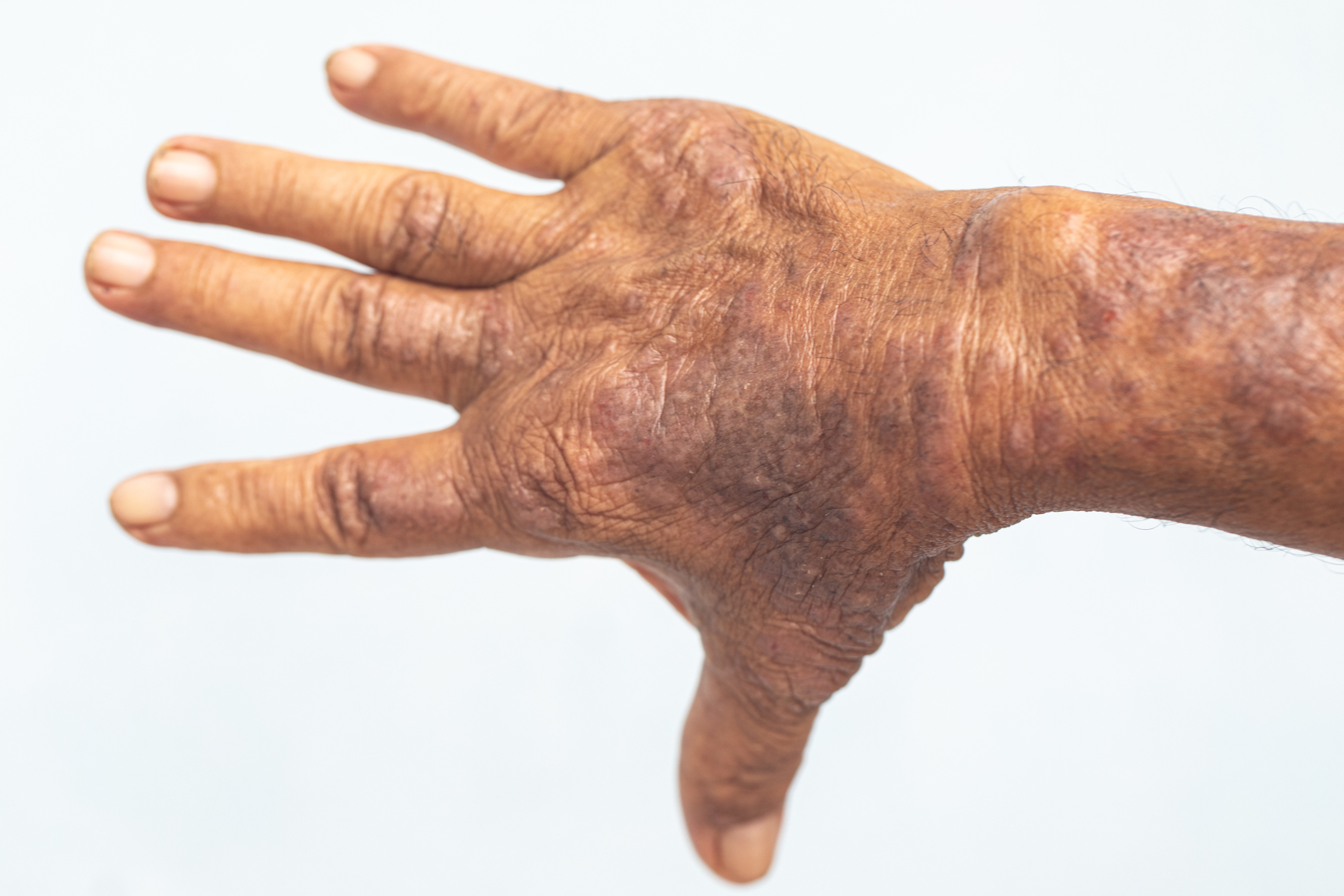
Image: Typical Atopic Dermatitis on an infant (to the left) and an adult (to the right) (iStock).
Prevalence
Studies show that around one in four toddlers (1) and one in ten 18-year-olds in Scandinavia (2) have atopic dermatitis. However, newer studies suggest that the prevalence is equally high in adults as it is in children. Around 70 % get eczema before they turn three years old, but for about 30 % of these, the eczema decreases before school age (3).
Prognosis and treatment
PROGNOSIS. Atopic dermatitis is a chronic skin disease, but some may experience periods without symptoms throughout their lives. While some children with atopic dermatitis experience fewer issues during childhood, others continue to contend with symptoms that persist into adolescence and adulthood.
TREATMENT. There are several good treatment options for atopic dermatitis, and it is important to start treatment early. Eczema is treated with moisturizing agents and treatment creams, such as topical steroids. For more pronounced and severe eczema, additional treatment such as phototherapy or over the counter medications may be necessary. Mild atopic dermatitis can be treated by a general practitioner, while patients with more treatment-resistant and severe atopic dermatitis is referred to a dermatologist.
LOCAL TREATMENT with moisturizing agents (creams, ointments, lotion) is the most important treatment. This should be done several times a day to prevent dry skin and itching. Eczema areas are treated with topical corticosteroids or topical calcineurin inhibitors. Such immunosuppressive ointments/creams reduce inflammation in the skin and relieve itching.
Read more about the treatment of atopic dermatitis here (in Norwegian).
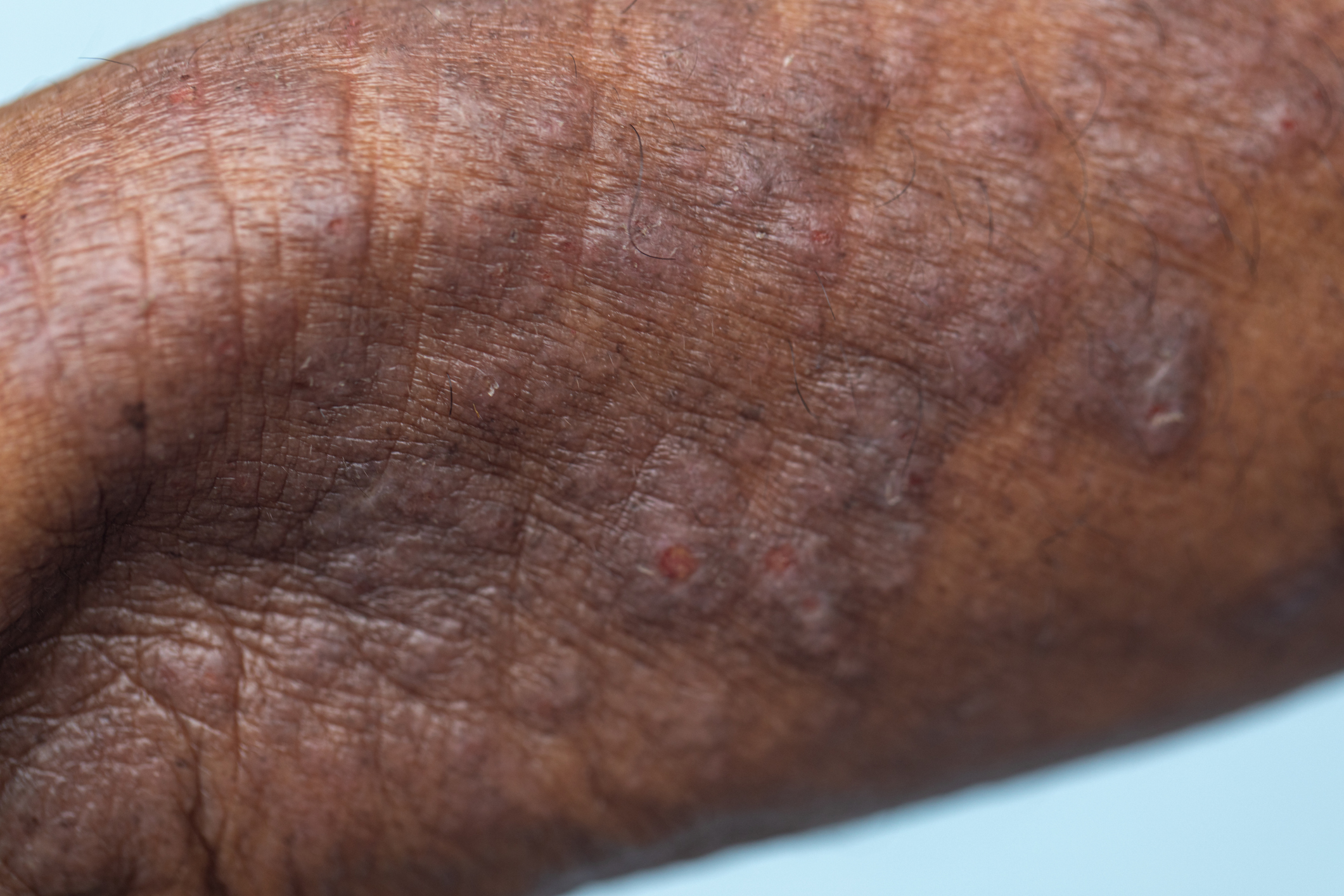
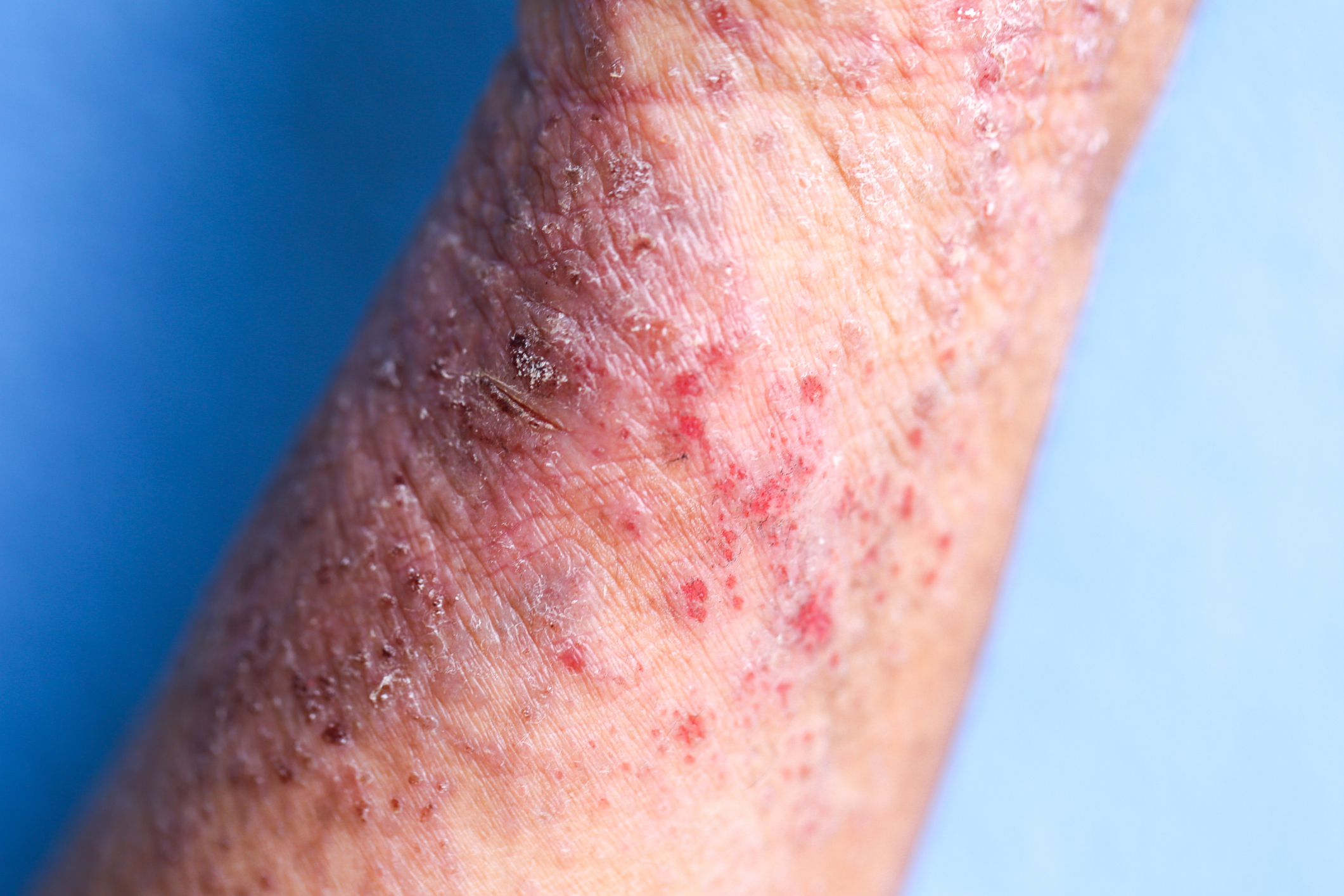
A life with Atopic Dermatitis
Many who are affected by atopic dermatitis may experience that it affects their quality of life to a greater or lesser extent. It is important to establish good moisturizing routines to care for the skin in the best possible way.
Advice and tips to avoid worsening the eczema
- Avoid bathing or showering for too long in hot water.
- Always moisturize the skin with lotion after showering/bathing.
- Opt for clothing that is gentle on your skin. Clothes that typically irritate the skin include woolen garments or garments made of coarse material.
- Wearing a full body and soft pajamas at night can prevent scratching while asleep.
- Wearing cotton gloves at night can prevent scratching during sleep.
- Keeping nails trimmed short can prevent scratching.
- Keep the bedroom cool and airy.
- Gentle hand hygiene: disinfectant with glycerol is gentler than handwashing. Wash hands only when needed. Use lukewarm water and mild soaps without perfume. Use moisturizers after handwashing.
REIMBURSEMENTS Individuals with chronic skin diseases can receive financial assistance for over-the-counter moisturizing treatment and medications. To get reimbursement from the national insurance scheme, you must first apply for inclusion in the scheme, which must be done by your dermatologist.
Read more about your rights and reimbursement options here.
Do you have any questions about your rights as an individual with a chronic illness? Call The Norwegian Federation of Organizations of Persons with Disabilities (FFO) Rights center at Tel. +47 23 90 51 55.
